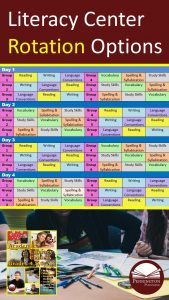How to Teach Greek and Latin Word Parts Vocabulary
Earlier in my teaching career I taught SAT/ACT preparation courses on the side. No, not the math.
In checking out all of the SAT prep books I found page after page of Greek and Latin prefixes, roots, and suffixes. As I began reviewing countless practice tests, I saw why. Academic vocabulary is loaded with Greek and Latin word parts. In fact, I discovered later that over 50% of the words in our dictionaries contain one or more Greek or Latin morphemes (the word parts which have meaning, not grammatical inflections).
Now, I never had a class in Latin in high school; it wasn’t offered and I wouldn’t have taken this dead language if it had been. However, having subsequently earned my MA as a reading specialist, having taught ELA at the elementary, middle school, high school, and community college levels for twenty years, and having taken two years of Greek classes, I certainly see the value of learning both Greek and Latin to enhance one’s English vocabulary.
Memorizing high frequency Greek and Latin word parts is truly the most efficient short-cut to academic language acquisition.
I do wish to say that I have found little long-term retention of vocabulary learned through simple rote memorization. The keys to memorization involve deep learning, association, and continued practice. Students won’t benefit from these Greek and Latin short-cuts by simply learning a list of 20 per week with a quiz on Friday. Instead, a few well-chosen, high frequency Greek and Latin word parts learned well in the word analysis context, associated with each other to develop mental linking, and practiced in the four communicative contexts of listening, speaking, writing, and reading works so much better.
Let’s refresh our knowledge of the Common Core State Standards to see how learning Greek and Latin word parts fits into a balanced approach to vocabulary development:
- Multiple Meaning Words and Context Clues (L.4.a.)
- Greek and Latin Word Parts (L.4.a.)
- Language Resources (L.4.c.d.)
- Figures of Speech (L.5.a.)
- Word Relationships (L.5.b.)
- Connotations (L.5.c.)
- Academic Language Words (L.6.0)
An Instructional Approach
Although many instructional techniques can be used to practice Greek and Latin vocabulary acquisition, I have never come across an effective instructional approach to introduce Greek and Latin word parts, so I had to invent my own. First, I had to select the right words. I used three criteria for doing so:
1. Frequency
I found high frequency research on prefixes, suffixes, and roots and examined the recent Academic Word List to verify that the Greek and Latin word parts I chose appeared in Tier 2 words (cross-curricular academic language) and not the domain-specific Tier 3 words (ones which each academic discipline has, yet is relatively exclusive to that discipline). Here’s a nice high frequency list.
2. Grade Level Utility
Frequency is important, but grade-level utility is an essential criterion as well. For example, the prefix em (meaning in) as used in emphatic is ranked #5 in the high frequency Greek and Latin prefixes; however, the prefix pre (meaning before) as used in preview is down the list at #13. No fourth grade teacher I know would argue that students should learn em before pre. You see the research studies don’t measure high frequency at reading grade levels. So, which words to teach can’t solely be based upon frequency.
3. Pairing
Lastly, I considered which words to teach in conjunction with which other words. First, I decided to avoid the conjugations. For example, if you were learning English, you would certainly need to learn the root, view, at some point. However, you would not have to memorize viewed, has viewed, had viewed, viewing, was viewing, will view, etc. This criterion cuts out a lot of memorization. Second, I chose word parts which link to other word parts by meaning, for example, em and en mean in and association, for example, pre + dict. Again, the prefix pre (meaning before) associates with the root dict (meaning to say). Together they mean to say before. Highly memorable. Of course, precocious teachers are adding on the suffix ion (meaning process or result) to form prediction (the process or result of saying before).
Now, besides the memorable association, this pairing also helps students problem-solve the meaning of the whole word. As you know, Greek and Latin word parts are usually, but not always helpful cues to the meanings of words. The pairing serves as an educated guess or predicted meaning.
I next required students to check their predictions. Students look up the Greek and Latin pairings as whole words in a dictionary (print or online) to compare and contrast their educated guesses to the denotative definition of the words.
Finally, I required students to divide the vocabulary word into syl/la/bles, mark its primary áccent, list its part of speech, and write its primary definition.
Now, that’s how to introduce Greek and Latin word parts!
Example
In addition to Greek and Latin word parts, the author’s programs include rigorous, grade-level instruction in each of the Common Core Vocabulary Standards:
- Multiple Meaning Words and Context Clues (L.4.a.)
- Greek and Latin Word Parts (L.4.a.)
- Language Resources (L.4.c.d.)
- Figures of Speech (L.5.a.)
- Word Relationships (L.5.b.)
- Connotations (L.5.c.)
- Academic Language Words (L.6.0)
*****
For full-year vocabulary programs which include multiple meaning words (L.4.a.), Greek and Latin morphology with Morphology Walls (L.4.a.), figures of speech (L.5.a.), words with special relationships (L.5.b.), words with connotative meanings (L.5.c.), and academic language words (L.6.0), check out the assessment-based grades 4, 5, 6, 7, and 8 Comprehensive Vocabulary.
Get the Grades 4,5,6,7,8 Vocabulary Sequence of Instruction FREE Resource:
![]()
Get the Greek and Latin Morphology Walls FREE Resource:
![]()
Get the Diagnostic Academic Language Assessment FREE Resource:
![]()










